Scotland, day one: The charm of Machrihanish Golf Club
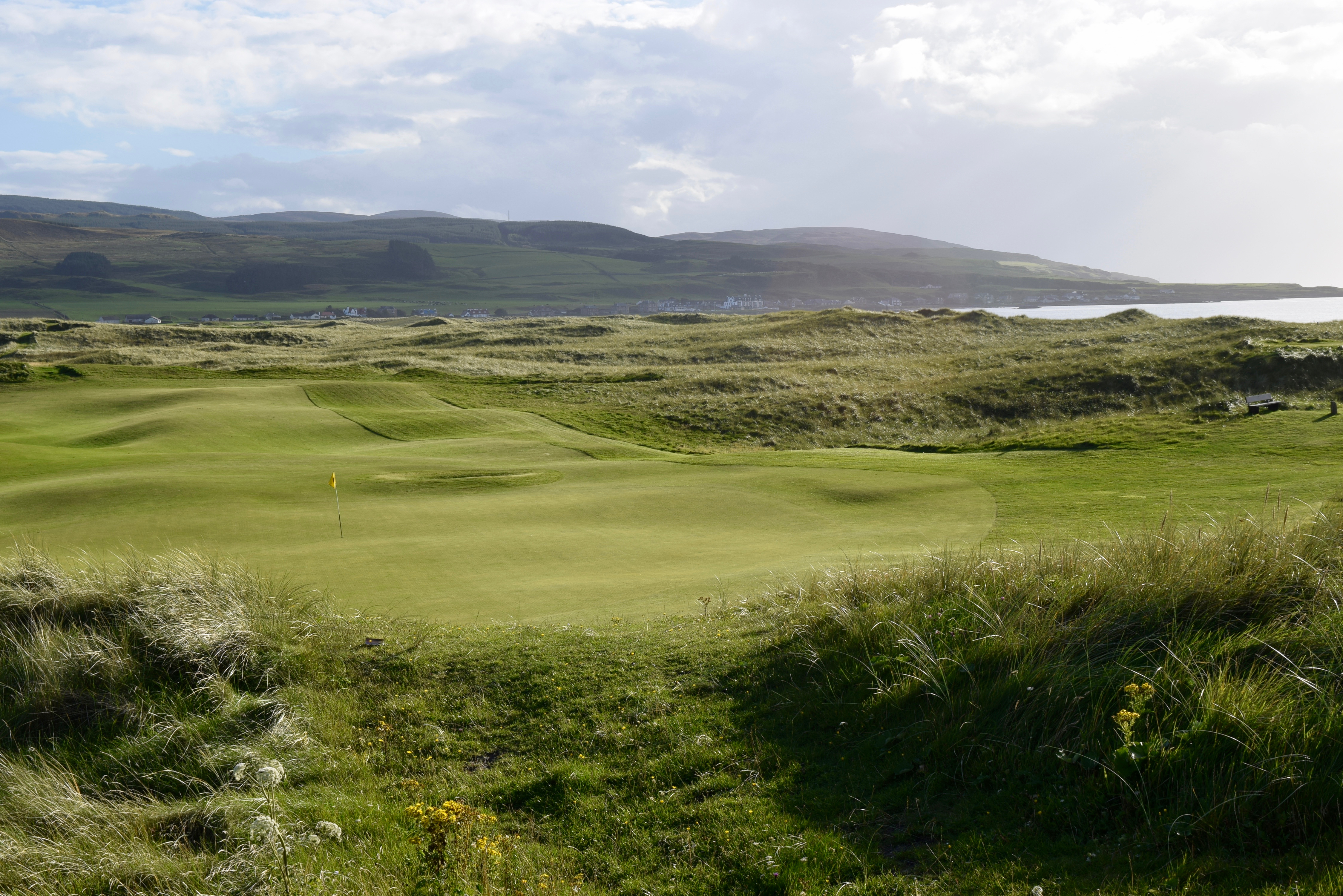
A long journey is rewarded by an inspired, and inspiring, golf course
MACHRIHANISH, ARGYLL, Scotland — We had already been on the road for 24-some hours, flying from Seattle on Wednesday morning to Dallas to London to Edinburgh, Scotland, and now it was late Thursday in a new time zone and we were three hours into a winding, scenic, four-and-a-half hour drive from Edinburgh, past Glasgow, north to Inveraray and then south on the Mull of Kintyre, to almost the very bottom of the peninsula, because unless you can take an airplane or a boat, there is no straight line from the body of Scotland across the Firth of Clyde to Machrihanish Golf Club.
About then, we wondered: How did Old Tom Morris get there? Back in 1879, when he laid out the course at the village of Machrihanish, on Machrihanish Bay of the North Atlantic Ocean? And the factual answer was that he traveled by steamboat, probably to nearby Campbeltown, but the more spiritual answer was that he got there because he very much wanted to get there, because when he saw the dunes, and the views across the water to the islands of Islay, Jura and Gighu — and, on a clear day, to Ireland — he famously said:
“The Almighty maun hae had gowf in his e’e when he made this place.”
More than a century later, another quote figured in the fortunes of Machrihanish Golf Club; in “To the Linksland,” published in 1992, Michael Bamberger wrote: “If I were allowed to play only one course for the rest of my life, Machrihanish would be the place.”
To some degree, the quote helped make Machrihanish a destination, for golfers willing to make the drive from Glasgow or thereabouts, north then south along the peninsula, or willing to take a short flight from Glasgow to Campbeltown, or take a ferry ride.
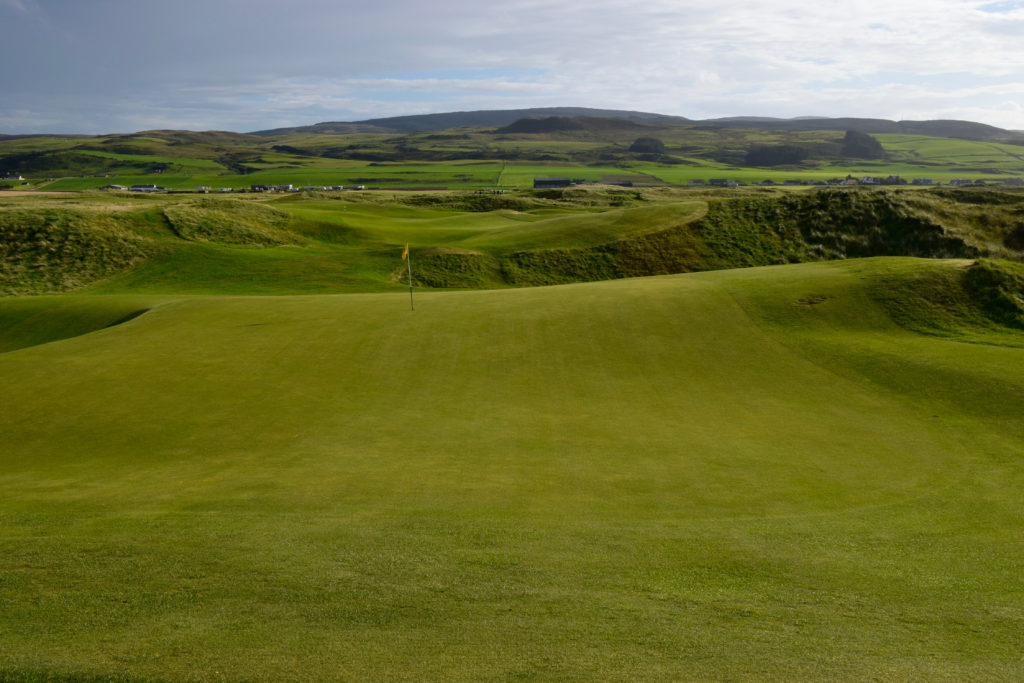
“That was a big exposure to it,” said Ken Campbell, 51, the PGA professional at Machrihanish Golf Club for 29 years. In those quieter days, the links golf course might have attracted 4,000 non-member visitors each year, he said; now, the number is 7,000, and the reputation of the place something far beyond that accounting, its praises sung by such respected golf writers as the late James W. Finegan, its stature such that it is ranked among the top 100 golf courses in the world.
“If you love golf,” Campbell said, “you’ll meet somebody who knows Machrihanish.”
At the invitation and intercession of David Connor of VisitScotland, I made the trek here this week, with three Northwest colleagues in golf journalism:
Former Register-Guard sports editor and columnist (and then of the Seattle Times) Blaine Newnham, one of the most respected golf writers in the Pacific Northwest, author of “America’s St. Andrews” about the construction of Chambers Bay and a friend and mentor to me throughout my career; Tom Cade, director of communications for the Pacific Northwest Golf Association and editor of Pacific Northwest Golfer Magazine, and Rob Perry, the immensely gifted photographer (and golfer) who specializes in golf courses.
And there we were, Friday morning, on the first tee at Machrihanish Golf Club, facing perhaps the most famous opening tee shot in the world.
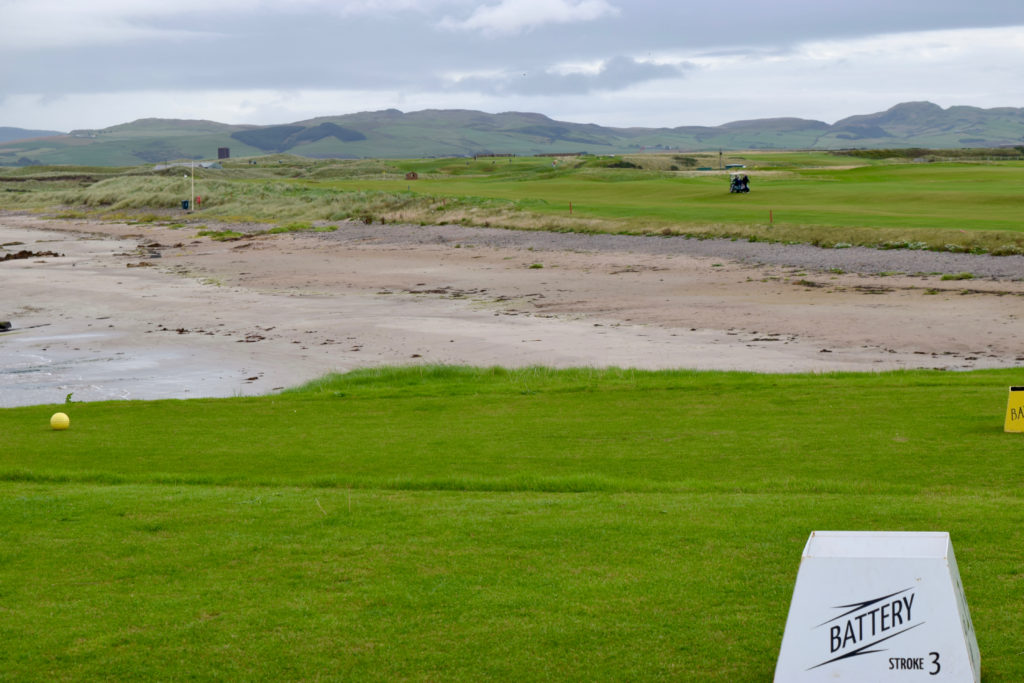
Writing 20 years ago, in “Blasted Heaths and Blessed Greens,” Finegan wrote: “From a tee hard by the golden strand and elevated some 10 feet above it, we play this 423-yarder on the diagonal across the Atlantic’s frothing combers to a gently rolling fairway tight along the shoreline. The problem is clearly stated: how much of Machrihanish Bay — the beach is in play — dare we bite off on this, our initial stroke of the round?”
Well, the tide might have been out, and the waves were calm, but the shot, requiring a carry of anywhere from 130 to 250 yards, depending on the line of attack, was challenging enough, just in principle. Newnham cleared the beach easily, not minding the distraction of two beach-walkers who ambled across the sand, oblivious of warning signs, as he addressed his shot.
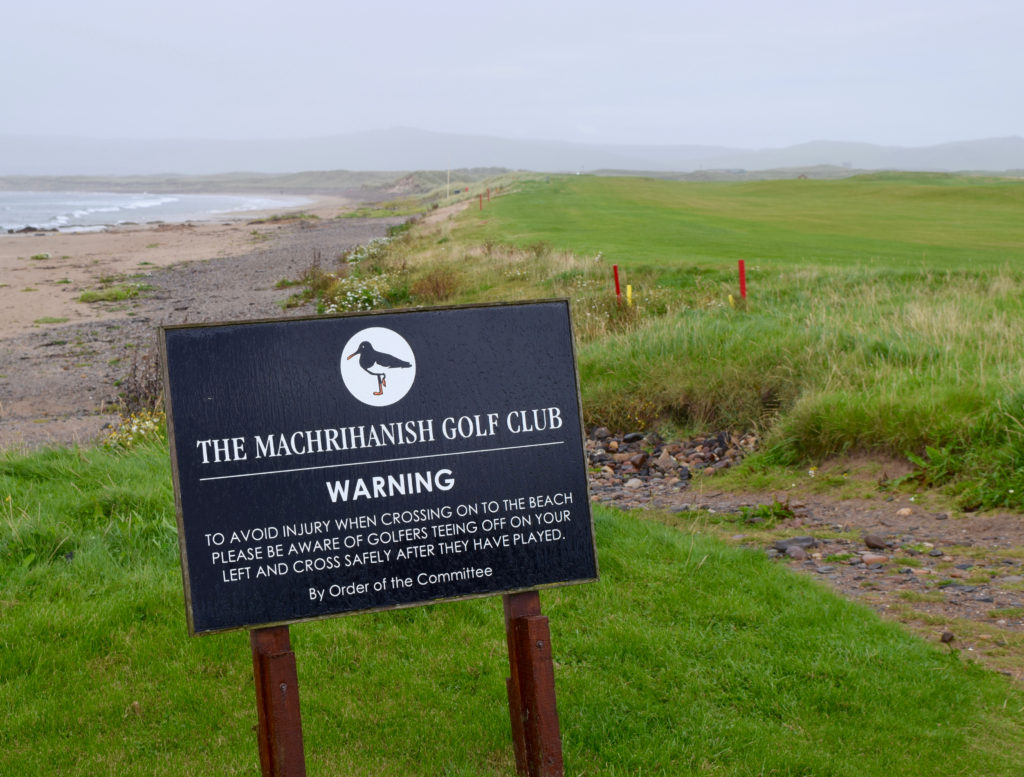
Now, for weeks, I had read about this hole, looked at photos, imagined how intimidating this first-ever shot in Scotland would be. And then, as I stepped to the tee, I picked a line confident that I could get there. And promptly thwacked my drive onto the wet sand, where upon it rolled on beach rocks, 20 yards or more short of safety, whereupon I struggled to a triple bogey.
A disappointing start (at least I didn’t hit a beach walker), but the golf course was anything but that. In fact, I would echo Bamberger: I would happily play this course again and again, knowing that every day it would be different, depending on wind (negligible Friday) and rain (we had some, but not much) and the bounce of the ball.
It’s wonderful.
This is a golf course of undulating fairways, mounds and swales; some links courses might have one bell, to ring as a signal to following golfers when a green or fairway is clear, because their shot will be blind; at Machrihanish, I remember at least three.
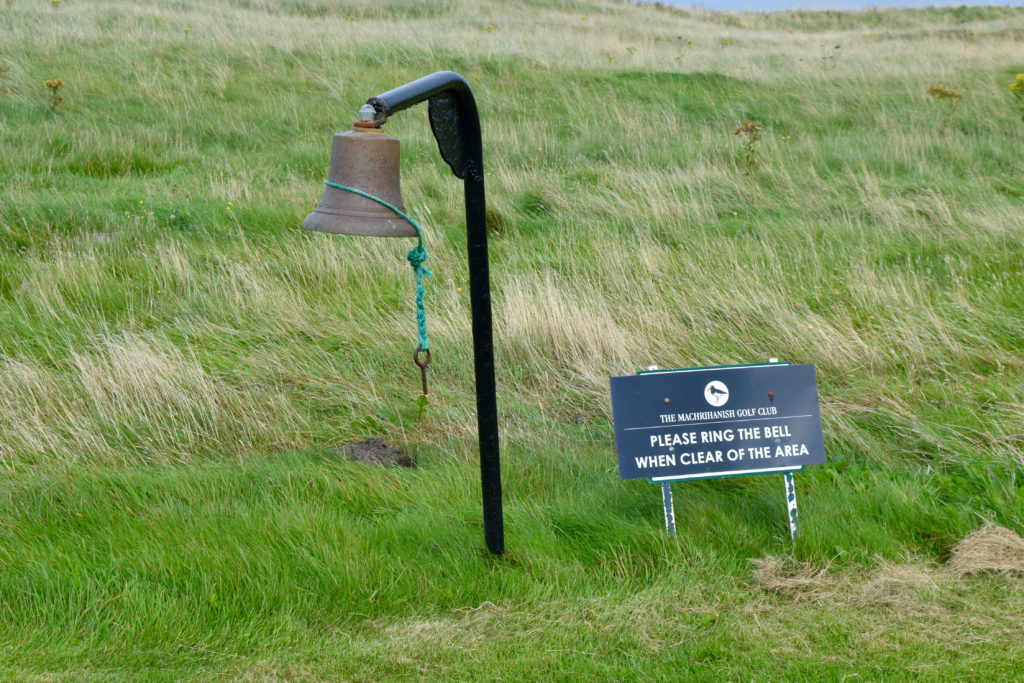
Finegan considered the fifth through eighth holes, all par 4s, a great stretch. “It is all there in this rough-and-tumble stretch of picturesque duneland: Elevated tees with breathtaking views across high shaggy sandhills; half-glimpsed fairways pitching and tossing at every imaginable cant or dog-legging gently around sentinel dunes; now a blind green in a hollow, now an exposed green atop a breezy shelf. … This is seaside golf at its purest and most compelling.”
The first three or four holes are closer to the coastline, and then the course turns somewhat more inland, despite vast stretches of grass-covered dunes between the course and the bay.
“I’ve got no real anecdotal evidence, but Old Tom Morris knew what he was doing, I think,” Campbell said. “He didn’t want to get too close to the sea. …”
With rudimentary equipment in that era, Morris no doubt feared the damage of winter storms, and blowing sand.
“A novice like me or you who had never built a golf course might think, oh, well, put it right on the shore, but if you do that it seems to cause nothing but trouble,” Campbell said.
“Everyone who comes here, other pros I know from Scotland, they’ll say, ‘oh, this is a great course, but at the fourth hole, why did they not hug the shore?’ But it was probably his experience …”
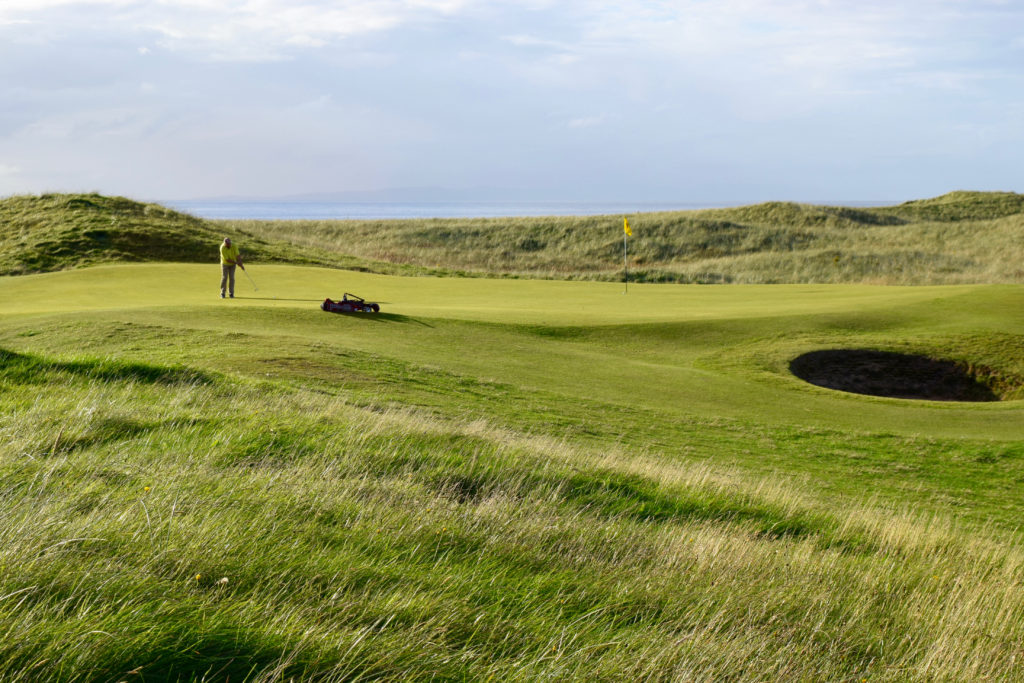
This is a golf course in which holes seem truly varied; there is no sameness, except a consistent spirit of adventure.
“It’s the charm that makes it stand out,” Campbell said. “It’s the romance about the place.”
Ranked No. 91 in the world by Golf Digest, No. 93 by Golf Magazine, Machrihanish Golf Club has greens fees of 65 British pounds for a single round ($85) or 95 pounds (about $125) for a day pass. A tremendous value.
Prince Andrew, with whom Campbell once played a round, is a member at Machrihanish. Over the years, various PGA Tour pros have come by, but perhaps the most interesting subset of visitors is golf course architects who have come to study the place with its undulating greens and mound-laden fairways — Tom Doak, Pete Dye, Kyle Phillips, creator of a world-famous course in Scotland, Kingsbarns.
Of course, David McLay Kidd spent summers in Machrihanish as a youngster, would have played the course often, and from that experience, Campbell believes, drew some of his inspiration for Bandon Dunes —in fact, Campbell remembers chatting with Kidd on a visit in the late 1990s, and Kidd mentioning this course he was designing on the Oregon coast. which launched a career that now includes a relatively recent course in the area, Machrihanish Dunes, which we will play Saturday.
“The land here is basically for a golf course, isn’t it?” Campbell said. “If you had a piece of land in the world (to build a golf course), this is where you would do it.”
The course, par 70, plays 6,245 yards from the white tees, which Cade and Perry played, and 5,960 from the yellows, which Newnham and I played. Perry, who plays to a 4.1 handicap, was our medalist, shooting even par on the front nine en route to a 78; Cade, whose number is 1.4, came in at 86 and Newnham, is he usually does, won the match of former Register-Guard columnists, 1-up.
My own round was a struggling 53-51-104, which included a couple of pars and, miraculously, given the thickness of the dune grasses, did not result in a single lost ball (and I found four, while looking for my own shots, and there was some looking required, for sure).
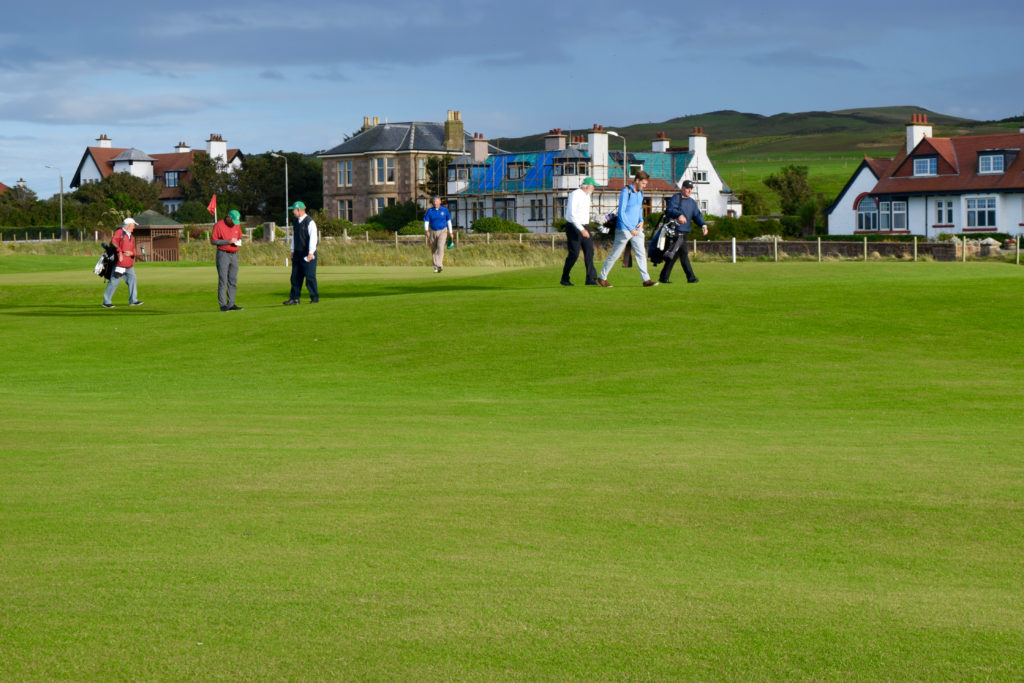
Later Friday, after our round, I visited with Campbell, and as we walked outside the clubhouse, he showed me an additional tee for the first hole, the blue championship tee, installed during his tenure and initially reserved for tournaments, but now playable by daily golfers. The tee is a few feet lower than the regular tees, and thus closer to the bay, and 12 yards farther back than the yellow tees.
“It’s not to make it hard, it’s just to have the feeling of the sea,” he said. “You can feel the water a lot more, and I think that’s a good thing, isn’t it?”
By then, it was late afternoon, and with Campbell’s permission, I set out alone, with my clubs, to play a few more holes, and to take some photographs. I started to tee up a ball by the yellow tees, thought again, and walked back to the blue championship tee. Why not? The beach was empty, the shot was crisp, and it cleared the sand and the rocks and then even the fairway itself, ending up in the first cut of short rough just beyond the fairway. A small victory, en route to a not-bad bogey, and a happy golf memory of an enduring place that inspires them.
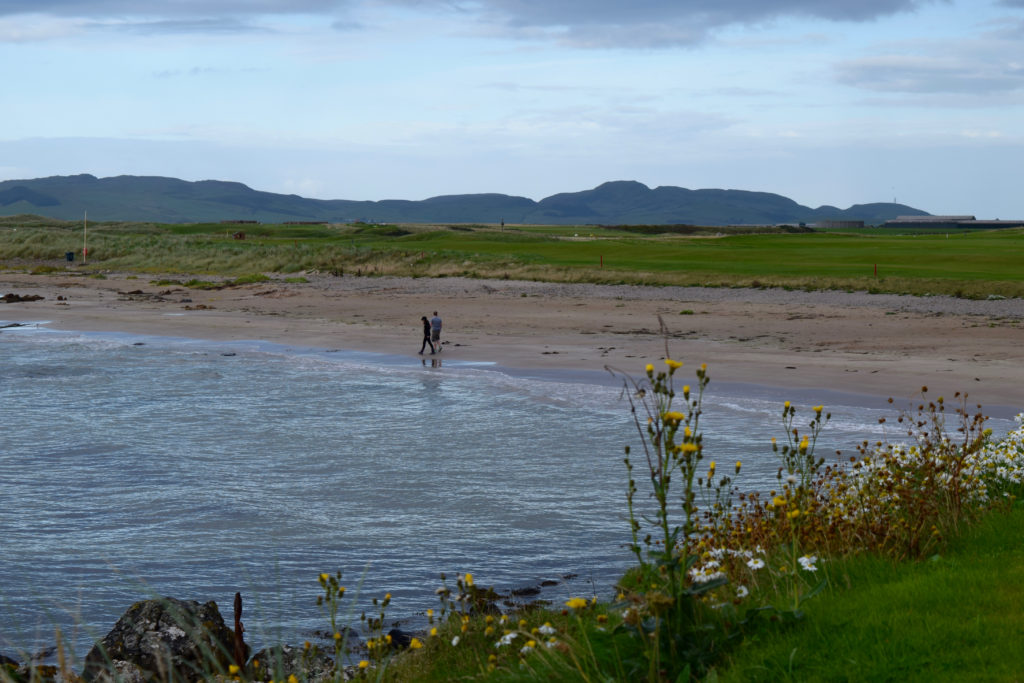
Tags …